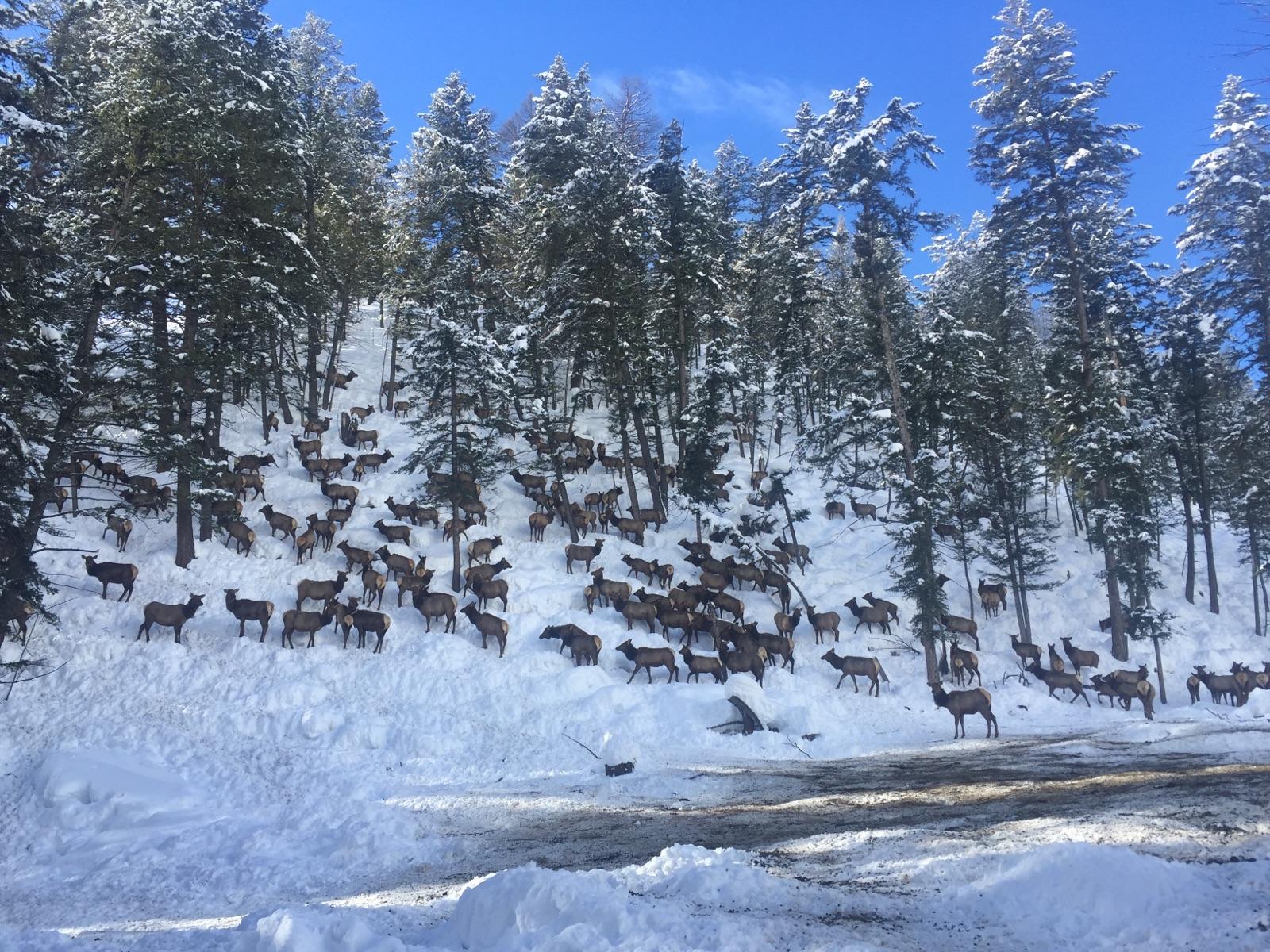How Winter Feeding Works

How Fish and Game prepares, executes and pays for winter feeding?
Before snow flies, Fish and Game prepares for the potential of a winter feeding emergency.
Feed pellets and other supplies are stored in strategic locations around the state where Fish and Game most commonly feeds. If the decision is made to feed deer and elk, staff and supplies are already in place to initiate feeding operations.
What kind of feed is right for deer and elk?
Big game feeding has come a long ways since the days of throwing hay bales on the ground. While hay is still used on some winter feeding sites, many locations are using large pellets of feed. They are more compact and less wasteful than other forms of feed, and bagged pellets are easier to transport and handle.
When Fish and Game first moved to pellets, grain-based pellets were fed to deer, and alfalfa-based pellets fed to elk because of their different nutritional needs. These pellets worked well in areas where deer and elk are separated, but where the species intermingle, such as Garden Valley, it can complicate feeding operations.
As a remedy, Fish and Game began using a new rye grass pellet for both deer and elk in 2005. Developed by wildlife veterinarians, the pellet has a lower protein content than either of its predecessors. Depending on conditions, rye grass pellets can be used by themselves or in combination with alfalfa pellets.
The key consideration is to avoid "shocking" a big game animal's digestive system, which may already be under stress. By using a lower protein pellet or transitioning to alfalfa pellets, potentially lethal digestive complications can be reduced.
This will prove particularly beneficial at the height of a feeding campaign and when big game animals are making the transition from pellets to new grass during spring green-up.
Who pays for winter feeding programs?
Emergency winter feeding is paid for by hunters through a $.75 surcharge on every deer, elk and pronghorn tag sold. This special set-aside account was established in 1984 and is only used to provide feed or provide winter forage on winter range. Annual income into the special account is approximately $200,000. Expenditures vary considerably, depending on winter conditions, ranging from a low of $100,000 during very mild winters to nearly $400,000 in more snowy winters.
